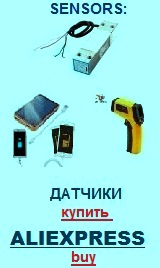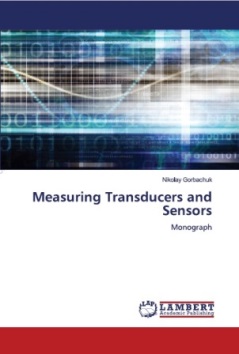Transducers, gauges, sensors - Information portal © 2011 - 2025 Use of material is possible by placing an active link
Temperature sensors. Thermometers
There are a variety of methods, ways and means of temperature measurement. To create a temperature sensor (thermometer) can be used by any of the properties of solid, liquid and gaseous substances, which are dependent on temperature: the physical and chemical state, size, electrical properties, etc. However, have found wide application thermometers that use a limited number of measurement methods .
Thermometers - mechanical contact. Based on the thermal expansion materials. These thermometers are different than high cost, satisfactory accuracy. Mainly designed for everyday practical use and for laboratory work.
In the con tact thermometer as a sensing element is a metal rod, extension l of which depends on the temperature (Dilatometric thermometers):
l = lo (1 + αt)
where the lo - length at 0 °C, α - coefficient of thermal expansion, t - the temperature in Celsius.
More often exploits the difference in thermal expansion of two dissimilar metals - bimetallic thermometers. These thermometers can be made small size, easy to manufacture, low cost.
Widely applied glass liquid thermometers. The main part of the liquid is concentrated in the bulk tank, which is almost a sensor (the sensor). To fill may be any liquid, depending on the operating conditions. Most use mercury, alcohol. These thermometers are not highly accurate, but they are most common in the home and laboratories. In industry, they were gradually replaced by thermometers, allowing to automate production.
Mechanical contact thermometers have a major drawback: their information (signal) can not be transferred to a distance for treatment. Therefore, the industry uses thermometers use electrical properties of materials change with temperature.
Thermometers based on thermal resistance effect. Electrical resistance of most materials varies significantly with temperature. This relationship is used to create thermometers. The temperature dependence of the electrical resistance of metals due to the dependence of the mobility of charge carriers (electrons) in semiconductors plays a fundamental role the temperature dependence of the carrier density.
Thermometer measuring range is limited mainly by high temperatures, which affect the linearity of the transmitter, as well as mechanical properties of the sensor and the housing.
The temperature dependence of the resistance of metals can be expressed as:
R = Ro (1 + γt)
Ro - resistance at 0 ° C, t - the temperature in Celsius, γ - temperature coefficient of resistance.
As materials for sensor thermometer used: platinum, nickel, copper, etc.
Semiconductor resistance thermometers - is the temperature sensors (thermistors), using the dependence of electrical resistance of a semiconductor temperature. This dependence can be expressed by:
R=Ro * e ^ B/T
The exponential dependence shows a strong non-linear characteristics of the thermometer and it is one of the major drawbacks of such a sensor. On the other hand such thermometers are the most sensitive to temperature change. At liquid helium temperatures the sensitivity can reach 100-200% / K. Besides a lot of resistance (up to 1 MW) can ignore noise in the junctions of an electrical circuit included. For the manufacture of thermometers use semiconductors: silicon, germanium, gallium arsenide, etc., as well as metal oxides.
Sensors based on metal thermometer is a very thin wire wound on a frame or a film deposited on an insulating substrate.
Semiconductor thermometers can be varied species. The sensing element as film and bulk can be made Subminiature. On fig.1 shows the construction of semiconductor sensor thermometer (1 - glass, 2 - steel, 3 - Silver).
Thermometers based on the thermoelectric effect. These thermometers are very widely used in the industry. Their work is based on the effect of electric voltage (electromotive force - EMF) in a circuit of two metals. More - sensorse.com/page9en.html
Home >> Temperature, thermoelectricity >> Temperature sensors. Thermometers
русский / english

• Information about various converters and sensors of physical quantities, parameters of various physical processes is presented.
• Electrophysical properties and effects in various electrical materials.
• Theory, experimental results, practical application

See also:
CONVERTERS, GAUGES, SENSORS
Information, news, advertising


